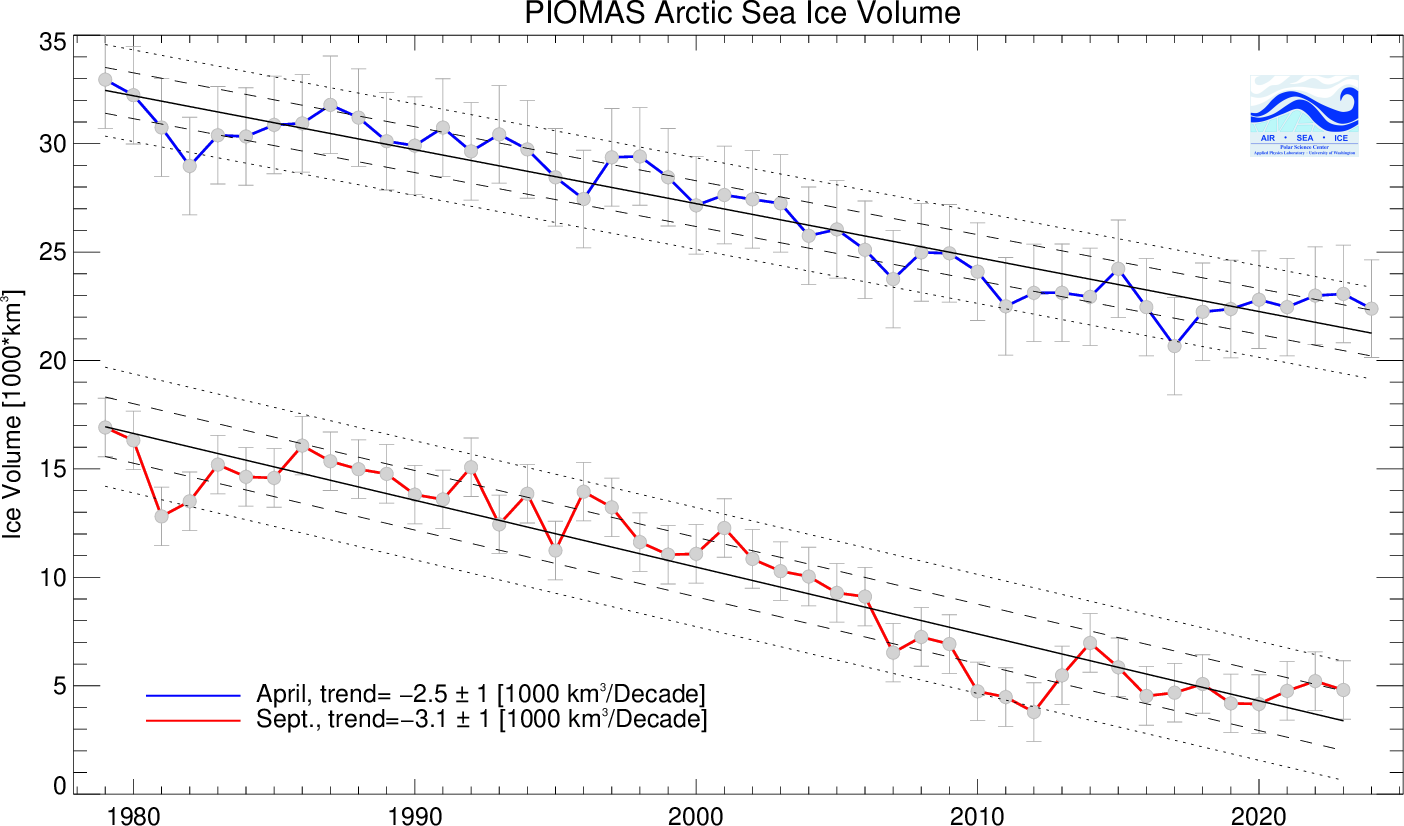- Banned
- #1

I'd bet you the losses here more than make up for any gains in Antarctica. And mind you there'll be no loss of albedo below the summer minimum till the temperature on the continent is above freezing for a very, very long time. And since the ice at the South Pole is seasonal and almost all of it will disappear come summer, the impact of its losses or gains is almost insignificant.
As I also pointed out earlier, since the Arctic Ocean is surrounded by land normally covered by snow over the winter, there is the likely possibility of an even greater loss of albedo in areas extending away from the pole that do still retain some incident sunlight over the winter months.
Be that as it may, the volume of the ice sheet IS the significant parameter. The area only gives us a rough idea of what the mass of the ice sheet is doing. Given the predominance of single year ice these days, it is possible to see what would seem to be significant increases in ice extents without a corresponding increase in ice volume or mass.
That red line up there: the April volume; it's at about 6,000 km^3 and descending at 3,300 km^3 / decade. That would indicate it's going to hit ZERO in less than 20 years.
Last edited:
